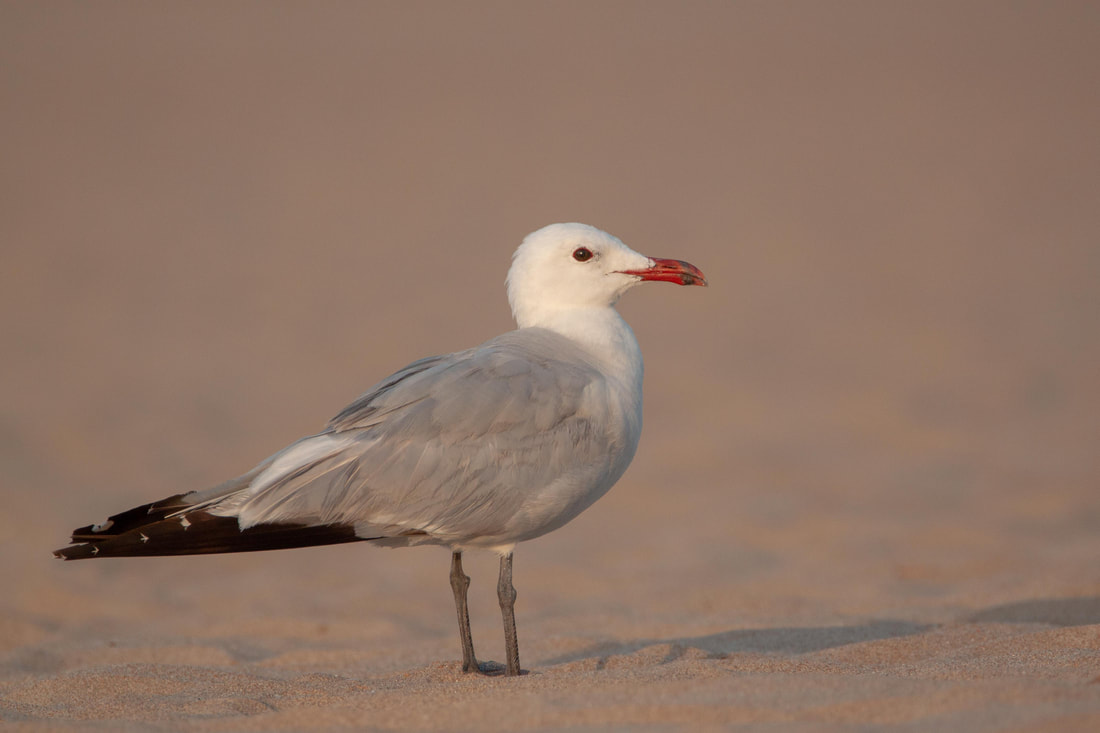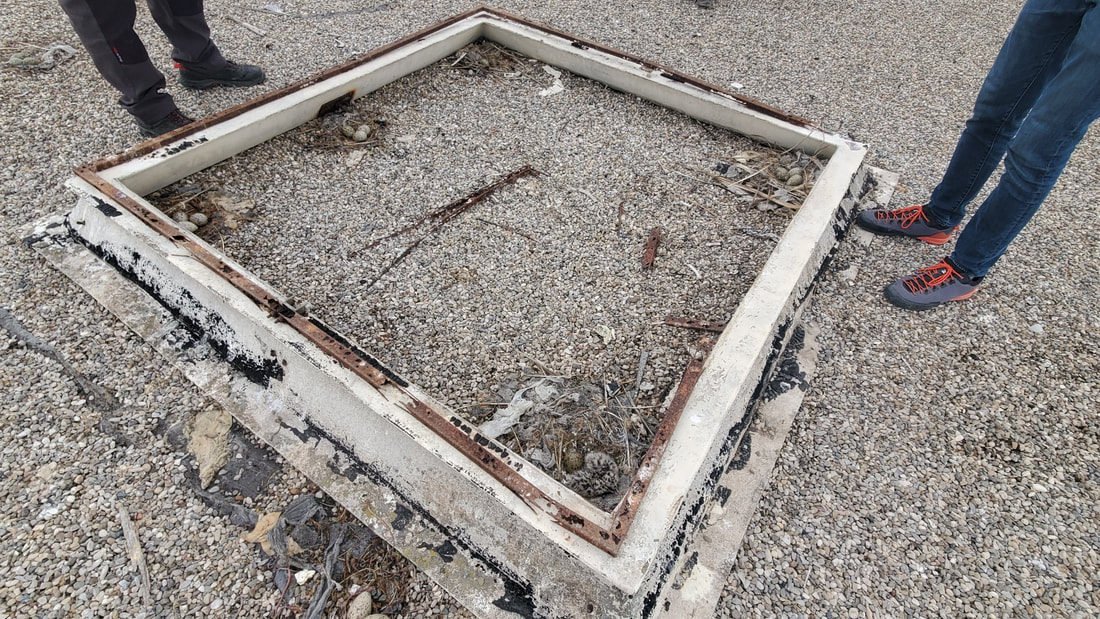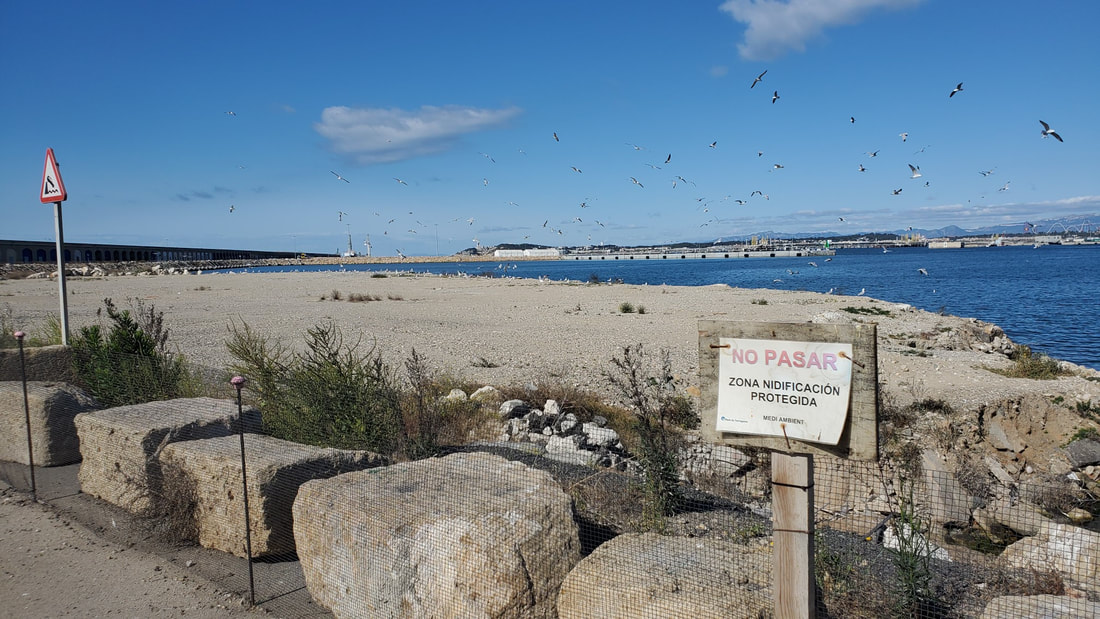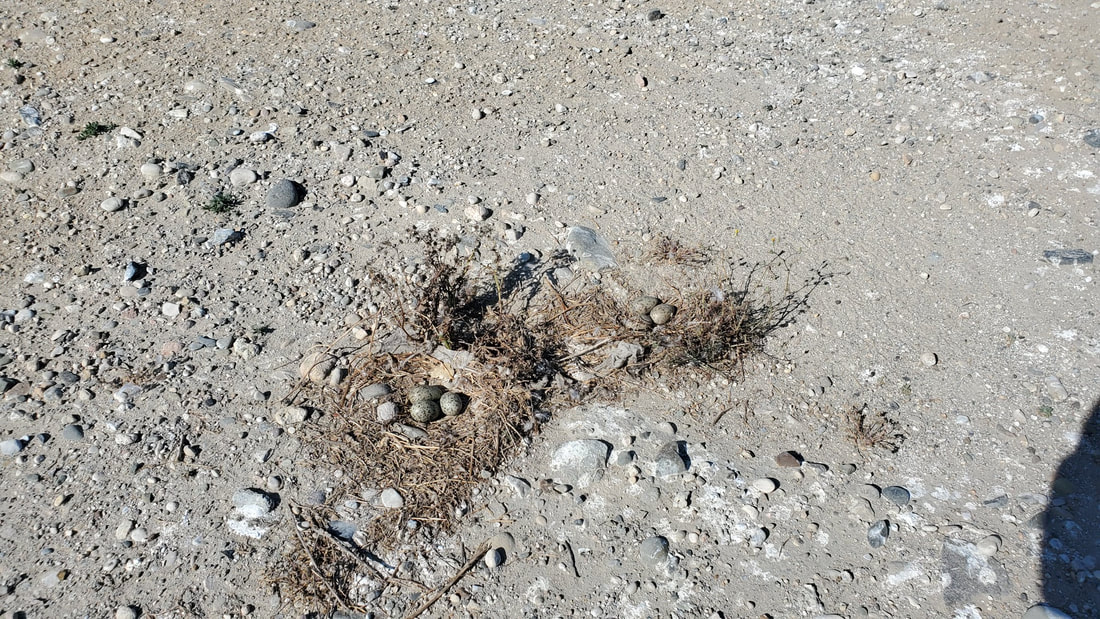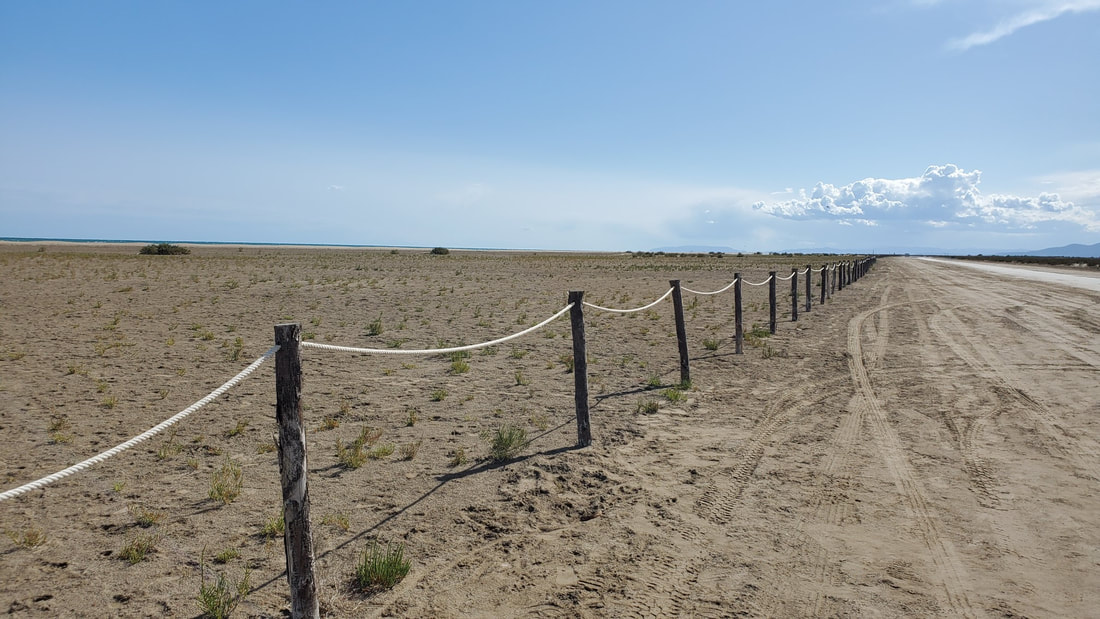|
Blog by Sarah Dalrymple, RSPB Senior Species Recovery Officer Last week I was out in and around Barcelona with Ricard Gutierrez and his colleagues from the Fauna Conservation Unit of the Government of Catalonia, to see how they monitor and protect breeding colonies of Audouin's Gull (Ichthyaetus audouinii). The current European population estimate for this species is estimated at 15,900 to 21,800 pairs, from just 1,000 in 1970s. Their biggest colony at the Ebro Delta, in Catalonia, was hit hard by predators in the early 2010s. The birds moved to more urban settings: at the docks in Barcelona and Tarragona, about 80km to the west, and at a rooftop colony on a factory in Barcelona’s industrial zone. Barcelona Port At Barcelona port, a few hundred gulls chose to nest on land put aside for development. To discourage them away from this area, and onto a nearby protected area put aside for them, the port landowners employed someone to walk up and down the development area all spring and summer, preventing the birds from settling in this area. The area on top of a nearby Harbour Wall was designated as compensatory nesting habitat. With the birds unable to settle on the development land, they were encouraged to move to this location by placing simple bits of shelter. This was amazingly successful; rocks, pipes, branches, everyone had a nest or two (or four!) next to it. 2023 found 838 nests here, an increase from 439 in 2022. Zona Franca, Barcelona The rooftop at Zona Franca covers nearly 7ha, where we counted 438 nests of Audouin’s, alongside a large colony of Yellow Legged Gulls (Larus michahellis). The Yellow-leggies outcompete the Audouin’s for space, pushing them further away into the corners of the site. Like at the docks, nests were frequently found next to something, in this case pipes, rooftop structures, and in one case – a cactus. This is the only known roof-top nest site for Audouin’s gull. 438 nests were counted here in 2023, a slight decrease from 453 in 2022, but still up on the 205 pairs counted in 2021, when the colony was first discovered. Tarragona At Tarragona, harbour authorities have fenced off the two nesting areas of these birds. Like at Barcelona, access to the dock area is restricted, so they are protected against casual disturbance. Again, the gulls preferentially nested next to even the smallest bit of shelter. At Tarragona port, the two sites held 651 nests in 2023, an increase from 439 in 2022 but still down on the peak of 1,043 nests in 2018. The work of the Fauna Conservation Unit has involved not just monitoring and protecting, but working with the commercial landowners at the docks and the factory to secure and protect the nest sites of this species. It has absolutely paid off; increasing the number of colonies provides security for the species, and by their locations, these colonies are protected from most predation and disturbance. It is great to have strong evidence of the positives of colonies sited in urban and industrial areas. At the Ebro Delta, I was shown the simple measures that have been put in place to help protect beach nesting birds such as Kentish Plover (Charadrius alexandrines) from recreational disturbance. As well as signage, extensive areas have been fenced off with rope fencing to prevent vehicle access. We spoke about how with very similar issues in the two countries when it comes to beach nesting birds, there is a lot of potential for co-operation and information sharing. This was a fantastic visit. It was great to meet Ricard and his team, and I cannot thank him enough for taking the time to welcome me and show me the gull colonies in these incredible places, as well as the pelagic boat trip, excellent birding around the Ebro Delta and some amazing Catalan tapas. If interested, more information can be found here: Government department website: mediambient.gencat.cat/ 2022 season summary: birdspain.blogspot.com/2022/06/la-gaviota-de-audouin-en-catalunya-en.html
0 Comments
Leave a Reply. |
Archives
April 2024
Categories
All
Photo credits: Oystercatcher by Katie Nethercoat (rspb-images.com)
LOTE Logo credits: Saskia Wischnewski |

